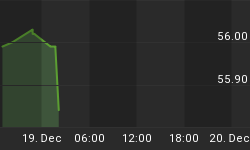The CPI now stands at an annual rate of 4.3 per cent (1.3 per cent over the Reserve's maximum target rate). And what does Governor Glenn Stevens do? He blames the commodity boom and 'excessive' wage rates, warning that they might force him to lift bank rates.
His statements are more evidence that the Reserve Bank of Australia really does not know what it is doing. It has absolutely no idea about how changes in the money supply affect the production structure and relative prices. In fact, the Reserve does not even believe in the existence of a production structure.
Stevens evidently thinks that cost pressures in the form of higher commodity prices and wages are inflationary. It's an intellectual disgrace that a governor of any central bank could actually believe this nonsense. It seems that it was only yesterday that Stevens was complaining about the consequences of "excess savings". In his view
an excess of saving over investment in Asia was a feature, resulting partly from the reaction to the late 1990s crisis and the determination to avoid a repeat of it.
The concept of excess savings is as fallacious as cost-push inflation. What he and so many others call excess savings is but another name for inflation. Let us assume that someone deposits a $1,000,000 in a bank . If the reserve ratio is 10 per cent and the banks lend out to the maximum then the original deposit will be pyramided into $10,000,000 of deposits. Therefore, what have here is not excess savings but excess deposits. In other words, a monetary expansion.
For years the world has been experiencing a massive growth of what economists call liquidity, which is just a fancy name for a monetary expansion, mainly credit. It is this credit expansion that has largely driven the commodity boom, which raises the question of whether this expansion fuelled inflation in Australia. Now it is a truism that Australian goods, including commodities, can only be bought with Australian dollars.
Given that we have a floating exchange rate the demand for our commodities should not have expanded the money supply. Nevertheless, monetary expansion has been dramatic: from March 1996 to December 2007 currency rose by 110 per cent, bank deposits by 178 per cent and M1 by 163 per cent (Bulletin Statistical Tables, Liabilities and Assets - Monthly - A1). For the same period the Reserve's assets zoomed by 163 per cent. These are shocking figures, the ramifications of which have not even registered with the economic commentariat let alone Mr Stevens.
Recent monetary figures are now signalling an economic contraction. Currency peaked at 40 last December: for bank deposits and M1 the figures are 191.3 and 231.3 respectively. While currency is stuck at the December figure, bank deposits and M1 started to contract, falling to 186.7 and 226.1 in January, and then to 181.4 and 220.7 in March. These figures strongly suggest that further monetary tightening is not only unnecessary but downright dangerous.
Yet the Reserve is basically arguing that its reckless monetary expansion has had no effect on prices, output, the terms of trade and the current account. Seemingly intent on proving that it is clueless on monetary policy the Reserve also warned that wage rises might force it to lift the official rate from 7.25 per cent to 7.5 per cent. Equally clueless is the Treasurer Wayne Swan, who announced that the CPI figure
... just reinforces the need to deliver a responsible Budget with a substantial surplus so we can tackle inflation, invest in future productive capacity and help shield Australia from global economic turbulence.
It ought to go without saying that all government budgets should be responsible. What Swan does not understand is that the current monetary policy could very quickly sink his budget. Some of our economic pundits are arguing that the Reserve won't need to raise the cash rate again to slow demand because the banks have already done that by raising their own rates.
What is being overlooked here is the direct link between the current monetary contraction and the banks' interest rates. It never seems to occur to these commentators that the monetary contraction might in some way be linked to the banks' interest rate rises. For these people "money does not matter".
















